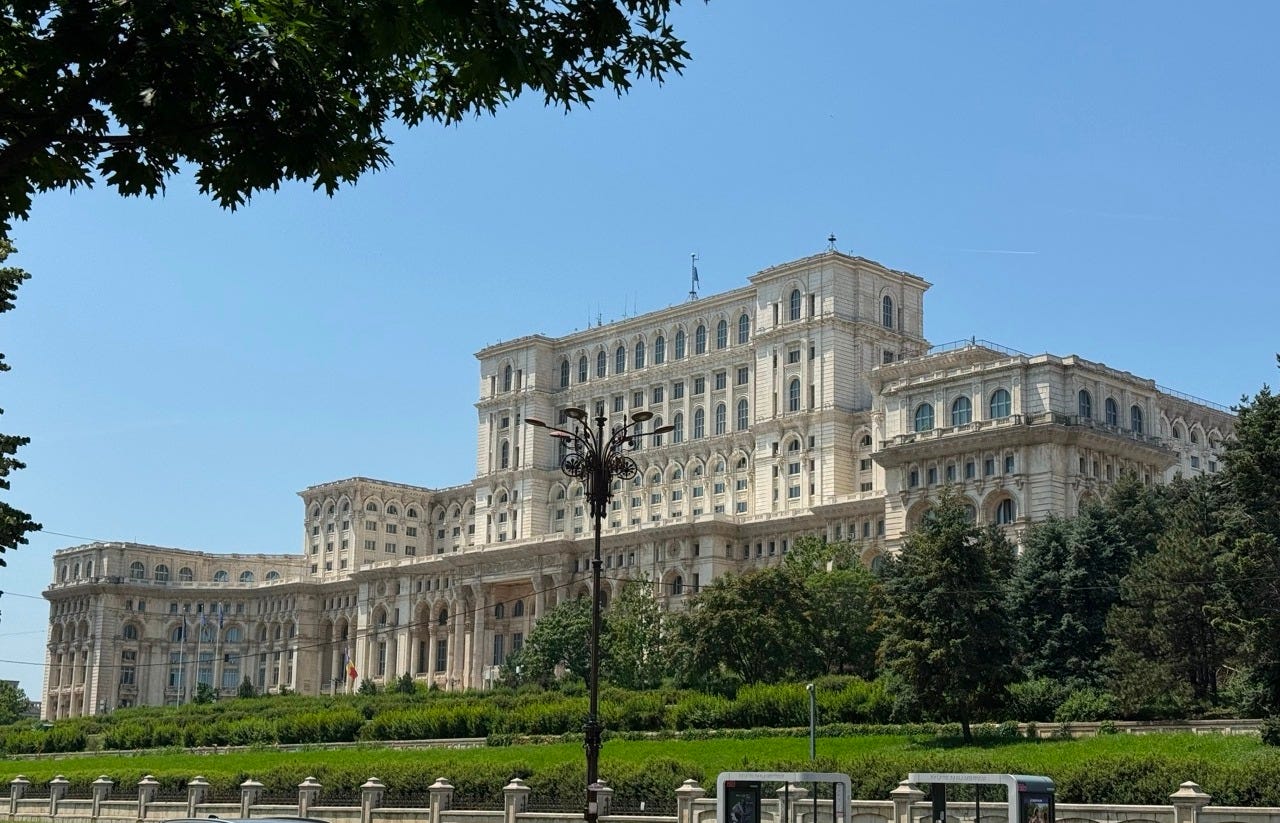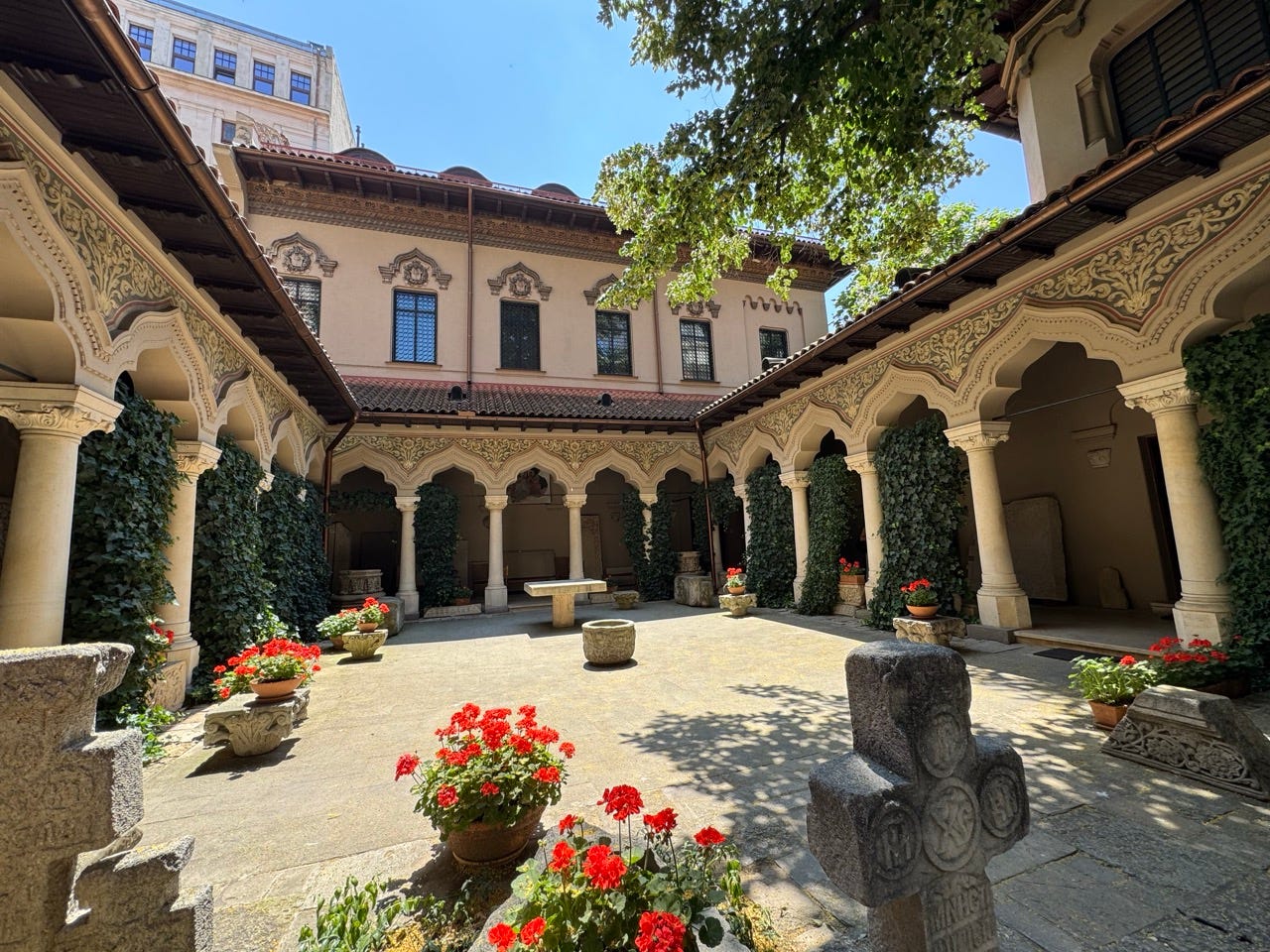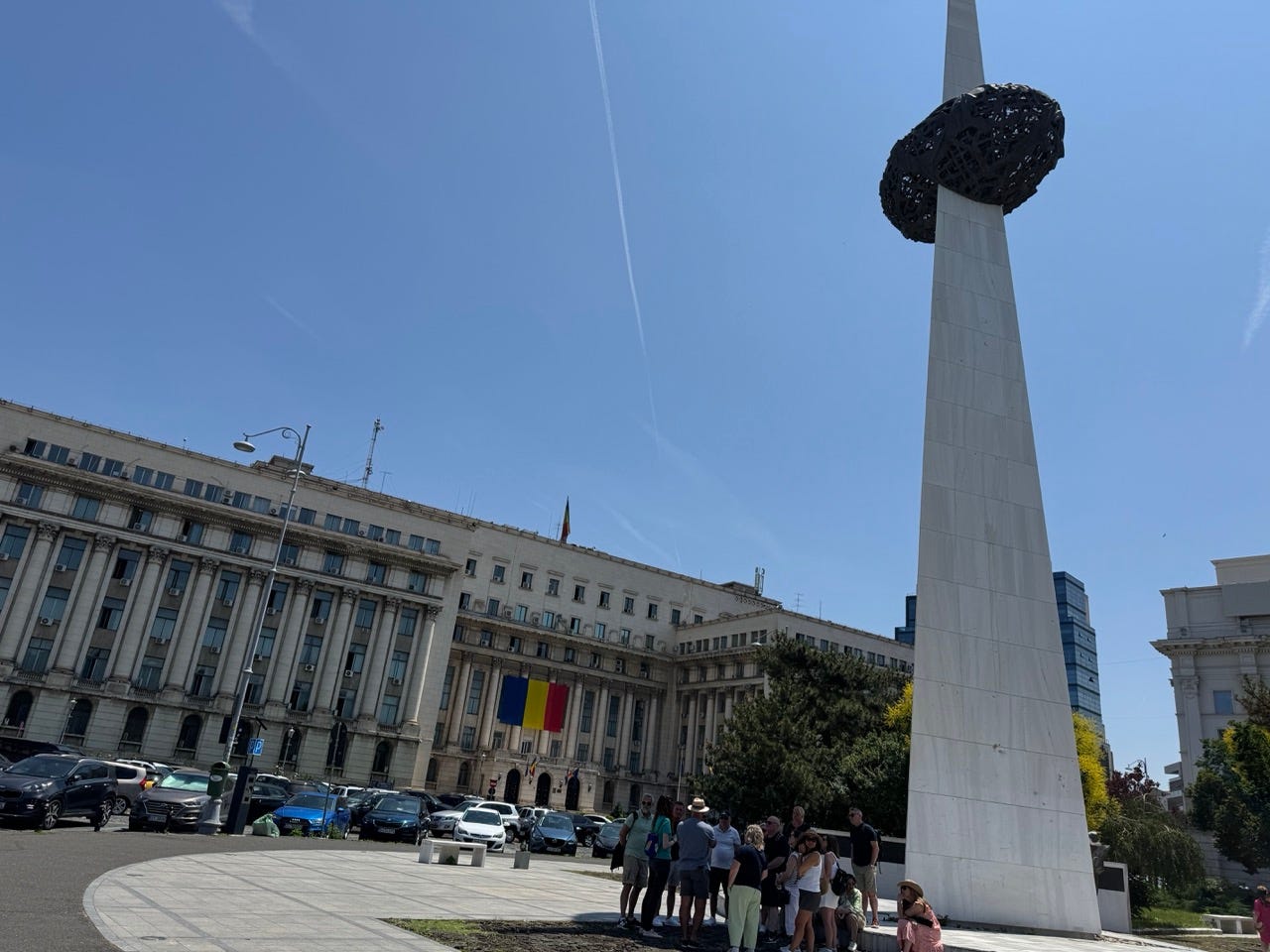Bucharest - Love letter from a first time visitor
British History Tours Abroad | History Travel
Bucharest was not, admittedly, on my list of European cities to visit, but a recent invitation to attend The Travel Network Group conference changed that, and I happily embraced the opportunity to travel to a city, and indeed country, new to me.
Bucharest is a jumble of architecture which holds a charm and countless stories of a place with a difficult and complex history. On the final morning of the conference we were offered a 2-hour walking tour of the city - I jumped at the chance! Our guide, Anita (interestingtimes.ro), was a local who had grown up in Bucharest during the final years of communist rule and its slow recovery toward democracy.
I was 10 years old when the communist dictator Nicolae Ceaușescu was toppled from power and summarily executed. My overriding memory was of hearing about the horrendous conditions of state orphanages into which many children, not necessarily parentless, had been left to their fate as a result of a ban on contraception and abortion coupled with horrendous levels of poverty and shortages of food, fuel and safe housing. Anita, born in 1984, just 5 years before Ceausescu was toppled, told us of her memories of the family sleeping in the kitchen in the winter with blankets up at the window (which moved with the breeze), allowing the temperature in there to get to a high of 16 degrees centigrade (60 degrees Fahrenheit) whilst the rest of their home plummeted to near freezing. Electricity would be on for 2 hours a day between 6am and 8am but it often went off at random times, leaving people in her housing block trapped in elevators. No one could keep food as there was no refrigeration (because there was no electricity) and so leftovers would be offered to neighbours or neighbours would rotate the cooking and cook for a number of families at once. Contrary to what I expected, Anita remembers her parents telling her that, in fact, their salaries were not bad but, food and supply shortages meant they couldn’t buy the things they desperately needed.
As you walk around the city you are met with numerous churches and monasteries, testament to the city’s Greek Orthodox faith. Religion here survived the communist era, unlike in Nazi Germany where it was banned. However, far from providing spiritual solace and support for worshippers during the hardships endured under communism, the church actually provided a ready made spy network of priests who would report back to the secret police. Priests had 2 choices, work with the secret police, reporting all confessions or, be imprisoned or killed. Many chose the latter, and were imprisoned and forced into hard labour at Sighet prison, approximately 600km (373 miles) north of Bucharest, near the border with Ukraine. A memorial statue, in what is now known as Revolution Square in Bucharest following the public revolt against Ceaușescu here on 21st December 1989 while he was delivering a propaganda filled speech, commemorates all the prisoners who suffered and died in Sighet prison. These prisoners included the priests who would not agree to become informers, members of political opposition parties and many of the old ruling elite, most famously, a man called Iuliu Maniu. Maniu was a 3-time Prime Minister of Romania and leader of the National Peasant Party, who spoke out against the communist regime. He was subjected to a show trial in November 1947 and convicted of espionage and treason and sentenced to imprisonment and hard labour at Sighet prison where he died 6 years later, aged 80. Maniu’s name is the only one to appear on the monument, subtly inscribed so as not to take away from its representation of all who died. The statue however does take the likeness of Maniu, but his body is shown in pieces, broken, as it was during his imprisonment.
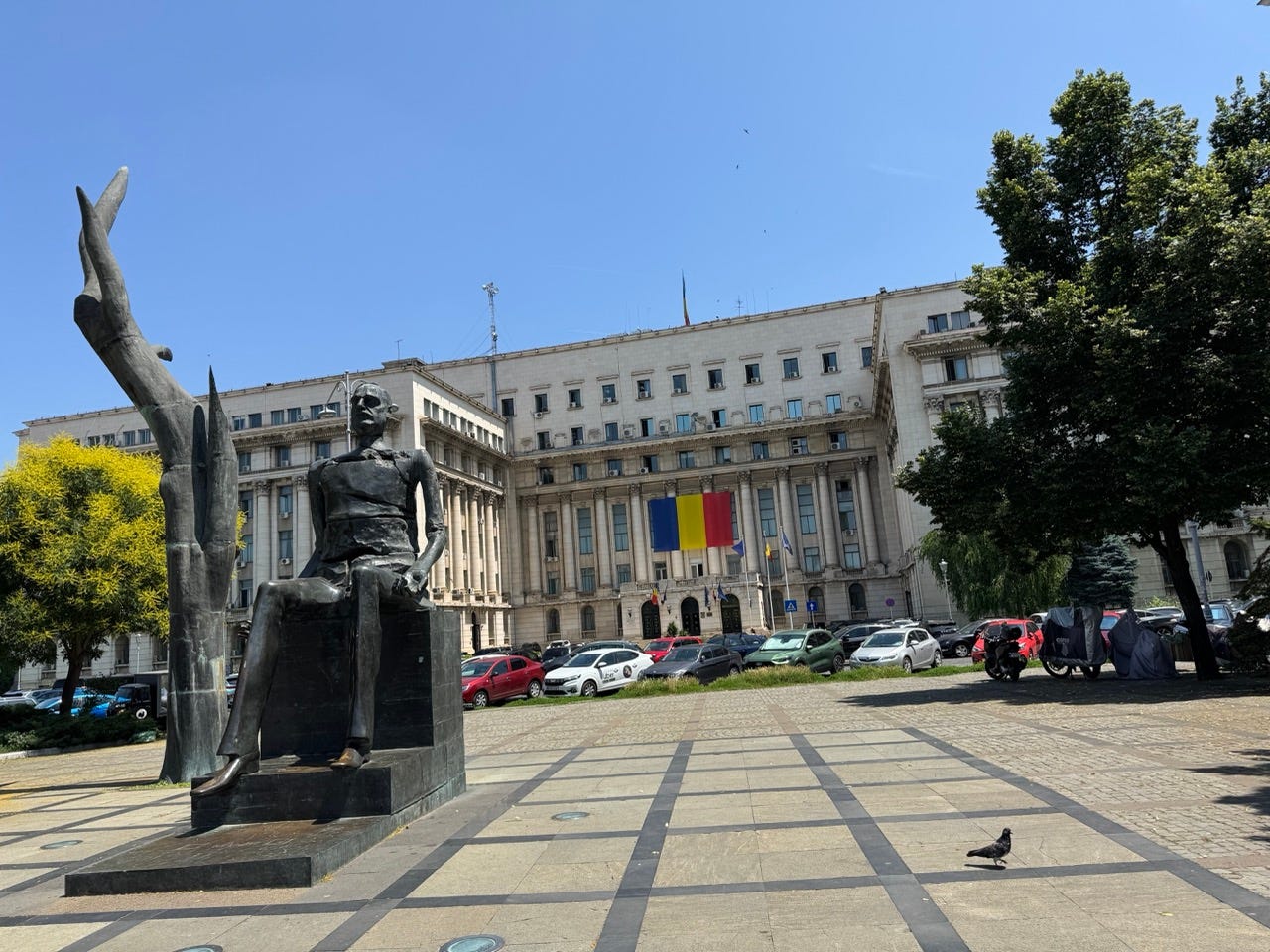
A great fire in 1847 had devastated old Bucharest, destroying around 70% of the city. Therefore much of the architecture is 19th and 20th century, but is no less interesting because of it. The influences from France, Germany and Italy are in evidence across the City, French architecture being so prevalent that the city was called “Little Paris of the East.” We needed to use the toilet during our walking tour and the guide told us to go into a restaurant called Caru’ cu bere on Strada Stavropoleos, which turns out to be one of the most famous restaurants in Bucharest, and for good reason. Oh my goodness! Beautiful wooden and glass revolving doors take you through into a stunning space decorated from floor to ceiling in the Neo-gothic style, with carved panelling, stained glass and mosaic floors - to add to the ambience a string quartet were playing! I must return. (Visit my Instagram page for more photos or see the end of this article)
The evening before our walking tour I attended a Black Tie event at ‘The Palace of Parliament.’ It is a triumph in marble, glass and, presumably in the parts you can’t see, concrete. It is the second largest administrative building in the world, behind the Pentagon. It was ordered to be built by Ceausescu, who euphemistically had it named the ‘Palace of the People’ or the ‘People’s Palace.’ It was, of course, not a place ‘the people’ were permitted to visit. They were never going to be able to take advantage of the bunker which would withstand an earthquake of a magnitude of 8 on the Richter scale, repeated bombardment from advanced missiles or 2 successive nuclear bombs. They were not permitted to tread the marble hallways or enjoy entertainment in the ginormous rooms which covering a space equivalent to that into which hundreds of people were living, just a short walk away in city tenements. The crystal chandeliers were beyond the imagination of most citizens. Catherine Lalumiere, Secretary General of the Council of Europe from 1989 to 1994, described it as “a palace of the megalomaniac, but also a masterpiece of the Romanians” and as such, I tried not to feel too impressed by it as I walked the halls as a guest at a Gala Ball!
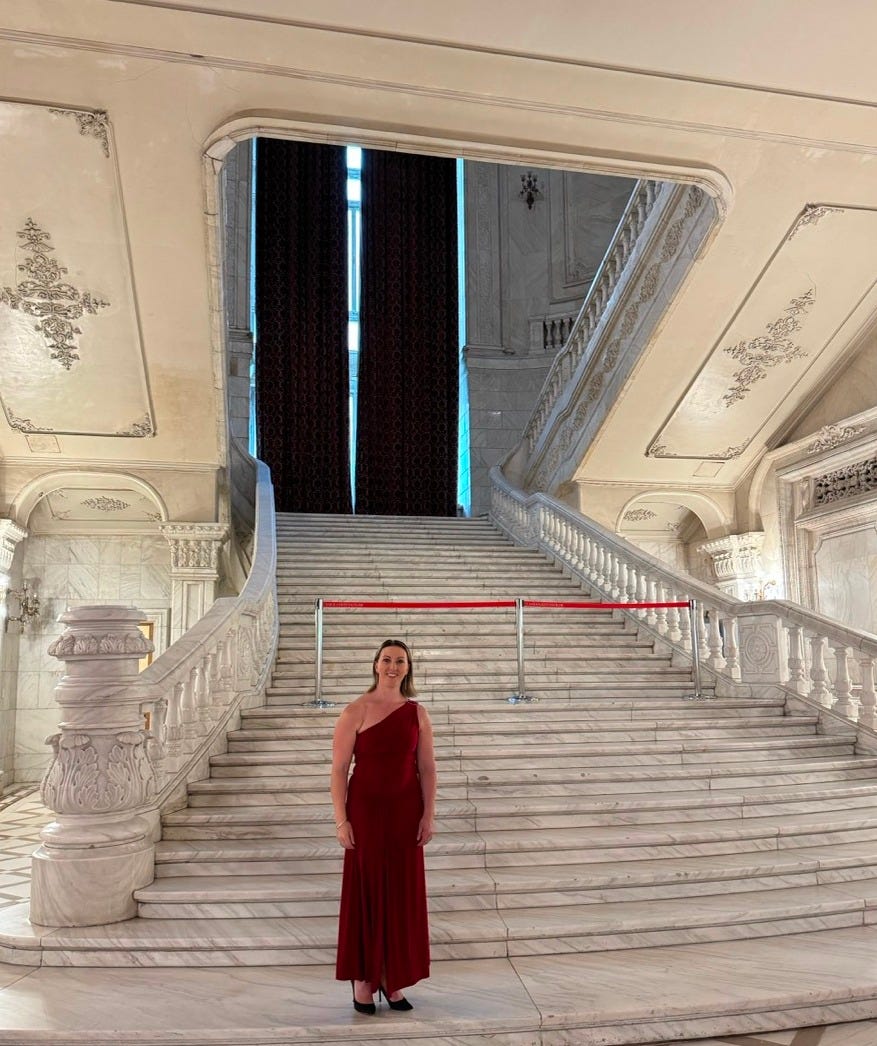
Building continues in Bucharest. A new cathedral, the ‘People’s Salvation Cathedral,’ sitting within the same area as Ceaușescu’s ‘Palace of the People,’ is still under construction. It’s a controversial project, with many criticising its cost, reportedly 200 million euros ($216 million) with three-quarters coming from the public purse, whilst rural communities still go without decent schools, hospitals and sewerage systems. As a national monument to the Romanian Orthodox faith, and an iconic landmark, it does the job. Gold dome-topped towers glisten when the sun shines and its size, covering over 8,000 square meters of floor space, makes it the largest Orthodox Church in the World and also beats second place St. Peter and Paul Cathedral in Russia’s St. Petersburg in height by 13 meters.
Bucharest doesn’t shy away from any of its past as it unapologetically strives for a better future. Another monument in Revolution Square, the ‘Memorial of Rebirth’, sits opposite the old palace of the country’s first king, the German prince, Carol of Hohenzollern-Sigmaringen, who was invited to the throne to become King Carol I in 1881. The palace gave the square its pre-1989 name of ‘Palace Square.’ The monument, a three sided white ‘shard’ stretching to the sky, commemorates the 1,500 people killed during the revolution of 1989. About three-quarters of the way up is what I’ve seen described as a bird’s nest, pierced by the white triangular tapered pillar. This ‘nest’ represents the communist era (1947 - 1989), the white line represents the Romanian people breaking through to the other side. It is not popular with all, many finding it too abstract and referring to it as the “potato on a stick.”
The history of Romania can be told in the streets of Bucharest and the city is now on my list of “must return to” destinations so I can learn and understand more about the complex and fascinating history of this country and its capital city, as well as to enjoy it’s incredible food and welcoming atmosphere!
So, this will not be the last ‘British History Abroad’ blog about Bucharest.
For 16 more photos, including from inside the ‘People’s Palace,’ please scroll down and consider becoming a paid subscriber.
Coming up next time
Over the next two weeks I will be sharing fascinating interviews with eminent Stuart period historians as we look forward to The Stuart History Festival, taking place in Worcester on 5th & 6th July.
Keep reading with a 7-day free trial
Subscribe to British History to keep reading this post and get 7 days of free access to the full post archives.





